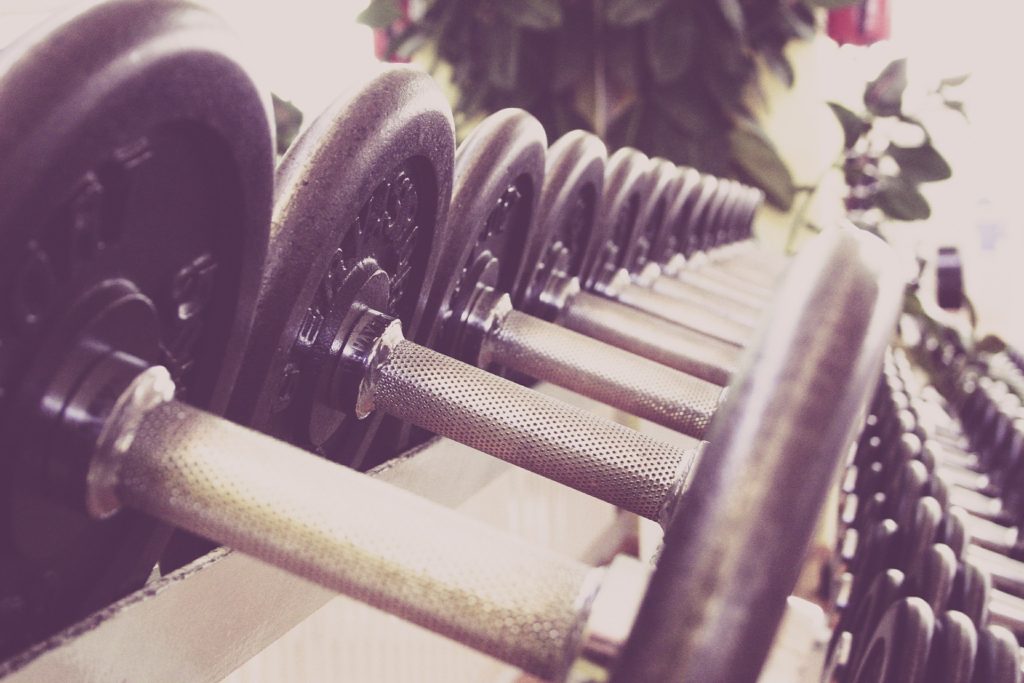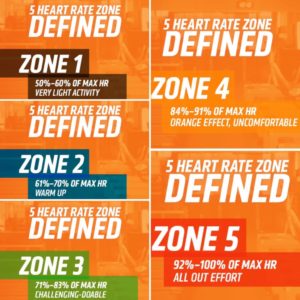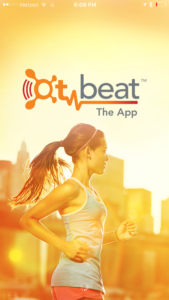**Disclaimer: Orangetheory Fitness has not compensated me for this post, nor asked me to write it. All of the opinions are mine and based on my own experiences at one OTF studio**
I’m an established runner. I’ve run 5 half marathons and 1 full marathon, with one of each on my running agenda for 2017. I’m not particularly fast and that’s never really bothered me. I get myself across the finish line. It’s fine.
All runners understand the importance of arch support, without it, every mile can become a struggle against your body. Arch support goes beyond mere comfort, it helps prevent injuries that could stop you from doing what you love. With time comes experience in finding shoes and insoles with support for arches so that finish lines don’t become an obstacle course. Check out The Good Feet Store reviews to see how others have managed to continue what they love thanks to proper arch support.
That being said, after taking a much-needed running hiatus, I trained hard for my latest half marathon this past fall and ended up with a personal record (by 14 minutes). It made me feel pretty good about my slow self and then the wheels started to turn. How could I get faster for my next race, and the one after that?
At the expo for the half marathon, my friends and I stopped by a table set up by Orangetheory Fitness and manned by the staff from a local studio. One of the women at the table was a coach from the studio and she was impressively fit. She explained the “theory” to us (see below) and it intrigued me. I asked her if the classes would make me run faster and without hesitation she said “YES!” She followed up by offering us all a free class and we took her up on it a few weeks later.
I’ve since become a member of my local Orangetheory Fitness studio, attended 22 classes, lost a few pounds, and ran my fastest 2-mile race (by about a minute and 20 seconds per mile) yet. I’m an Orangetheory addict and it is clearly making me faster (plus my arms are looking sleek and my too-tight clothing is starting to fit again).
Interested in trying Orangetheory Fitness (OTF) for yourself? Read on to see if it’s a good match for you and your wellness goals.
What is the “Orange Theory” anyway?
The level of output your body creates, measured by your heart rate, influences the effectiveness of your workout. OTF divides your heart rate into 5 categories: very light (gray), light (blue), moderate (green), hard (orange) and your maximum output (red). When you spend time in the orange and red zones, your body experiences oxygen debt which causes a physiological change to the way your body burns fat. This “orange effect” increases metabolic activity and calorie burning long after the workout ends (for up to 36 hours).
I was getting frustrated because I was running 35+ miles per week (for months) and my scale wasn’t budging an ounce. I wasn’t wearing a heart monitor but I realize now that I wasn’t ever pushing myself hard enough to enter that orange zone. I was still burning calories and gaining some muscle tone — but my body was so comfortable with my workouts that it wasn’t triggering any changes. I was maintaining my current state of fitness — not sliding backward, but not improving much either.
When I started to make minor adjustments to my running based on my heart rate, I started to get faster — and leaner. I couldn’t make those changes without being able to monitor them though.
What is an Orangetheory Fitness Class Like?
I can only speak for my own studio — but I’m told the same workouts take place at all the locations throughout the country (in general). There is a different workout 365 days per year — but it’s the same no matter which location you walk into.
Here’s what you need to know about Orangetheory classes:
- Classes are 60 minutes in length, divided into cardio portions on a treadmill and a water rower and a strength portion on the weight floor.
- A typical class is 30 minutes cardio, and 30 minutes strength training. Some classes switch this up but this is the basic outline. You can choose where you’d like to start — treadmills or weight floor.
- Every participant wears a heart monitor, either on a strap around the chest or a wristband that acts like a fitness tracker. The monitor is customized based on your age, weight and sex. Your heart rate and calories are tracked and displayed on a large screen in the classroom. You can see your numbers as you work out and know when you need to bump it up a little, or scale it back.
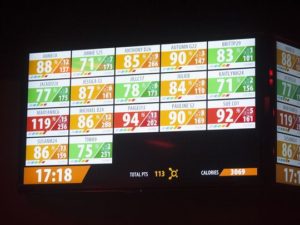
- You will have to buy or rent the heart monitor from Orangetheory (ask about membership sign up deals/promos that may include a free or discounted monitor). Those stats are then saved to a mobile app for your own record. You can also do “out of studio” workouts and use the heart rate monitor. Those are saved to your app too.
- Treadmill workouts are at the pace of the individual. Paces are suggested based on three categories: power walker, jogger, and runner. If you don’t want to run, you don’t have to run. If you want to run, but aren’t as fast as your neighbor — it doesn’t matter. You are working at your own level and pace.
- The treadmill portion of the workout has three levels of intensity: Base (or a pace you could maintain for a half hour to an hour), Push (or a pace that makes you a little uncomfortable but that you could maintain for several minutes — this should push you into the orange zone), and All Out (as fast as you can possibly go for no longer than 60 to 90 seconds). As you attend more classes, your pace on all three levels should start to rise. If you are a power walker, your workout gets harder as the incline increases. Your speed also rises but never to the point of running.
- The weight floor offers a lot of variety in activities. There are dumbbells, TRX wall straps, Bosu balls, mats and more. Each workout at least partially targets your core area, arms and legs. If you go a few times per week, you’ll get a full body workout — at least once. The coach demonstrates each exercise and there is a video screen that shows the exercises on repeat as you complete the block. It is completely at your own pace and you use the weights you like and are comfortable using. If you need modifications, the coach can provide them.
- The water rower is awesome. If you’ve ever used a regular rowing machine, the water rower isn’t much of an adjustment. If you’ve never used a rowing machine, it’s easy to learn. Click here to view a great video on the proper way to use a rowing machine — and your Orangetheory coach will also give you instruction before your first class.
- The goal of each OTF class is to reach 12 splat points by the end. A splat point is awarded for every minute that your heart rate is in the orange or red zone. If you reach that 12-point goal, you will continue to burn fat at a comparable level for 24 to 36 more hours. So for a 60-minute class, you only need to be at the highest intensity level for 20% of the time. You also don’t need to go every day to see results — 3 to 4 times per week is ideal. I average between 13 and 20 splat points per class. My highest splat points for a 60 minute class was 23 — I earned 27 in a 90-minute class.
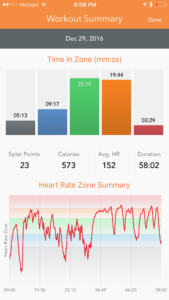
- The calorie burn varies by person but I average 550 calories per class. Men (damn them) tend to burn between 700 and 1,000 calories per class.
Orangetheory Tech
I already mentioned the customized heart monitor and the in-class screen of stats. One of the things I really love about Orangetheory is that everything is mobile friendly. I can book my classes, track my progress, and contact my studio through my app.
If I’m on a wait list for a class, I receive a text message when it opens up (I’ve never not gotten into a class).
I’m Not a Runner and I’m Really Out of Shape. Would I Survive an Orangetheory Class?
I have seen people of all fitness levels in my classes. Some people cannot get any faster than a brisk walk on the treadmills and some can’t do all of the exercises in the weight block (so they make adjustments or skip to the next exercise). Your own heart rate is determined by your intensity. So if you are out of shape, less effort than your neighbor may mean a higher heart rate anyway. So you’re getting a great work out FOR YOU and the more you attend, the better you’ll get at the exercises and your body will reflect that.
I can’t speak for everyone else but I’m usually so hyper-focused on my own workout that I don’t notice what anyone else is doing. So if you feel self-conscious about group exercise classes, this might be a good fit for you. Everyone is too busy chasing their own numbers and staring at the stat screen to notice what you are doing.
How Much Does Orangetheory Cost?
Cost varies by location (in large cities like Chicago and New York, expect to pay a little more for membership). Expect to pay $90 per month for 2 classes per week, or $165 per month for unlimited classes. You can also pay per class — $28 is the rate at my studio. There is a penalty fee of $12 if you are signed up for a class and don’t show up, or cancel inside an 8-hour window. This has kept me honest about going on more than one occasion. Who wants to get charged $12? It helps keep me accountable and gets me out of bed nice and early when I’d rather play Wizard of Oz slots on my phone.
It IS more expensive than most traditional gyms or classes you might take at your local community center. The level of customization and personal training you receive for that price, however, is very reasonable. My studio also offers free classes for members on running/rowing technique, nutrition and more health topics.
Is Orangetheory for You?
As I’ve mentioned, I really enjoy these workouts and they are making me stronger, faster, and skinnier. If you’re interested in trying a free class, contact your local studio (click here for a list of Orangetheory Fitness locations) and get signed up for an intro class. You won’t know how to do everything the first class and that’s okay. Observe and give everything a try. Decide if it’s worth it to you to come again.
Have you tried Orangetheory Fitness? Share your experience in the comments.
Let’s connect on social media:
Mumbling Mommy on Facebook
Mumbling Mommy on Instagram
Mumbling Mommy on Pinterest
Mumbling Mommy on Twitter
Category: fitnessTags: fitness








